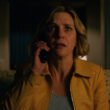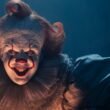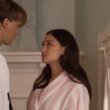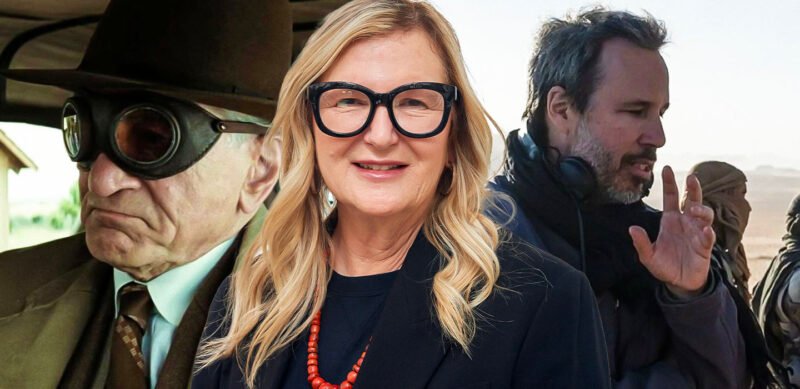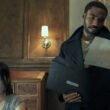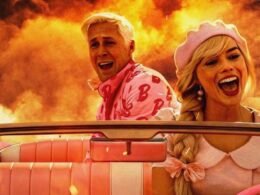Killers of the Flower Moon is a profound work of cinematic importance. It’s not only one of the best movies of 2023 but one of the best of the 21st century. The film has been nominated for double-digit Academy Awards — 10 to be exact — in categories ranging from Best Picture to Best Director to Best Original Song. It has also been nominated for Best Achievement in Costume Design, a category bursting at the seams with iconic talent. One of those nominees is Jacqueline West.
I got the chance to chat with Jacqueline about Killers of the Flower Moon, working with Martin Scorsese, creating Robert De Niro‘s iconic driving goggles, Dune: Part Two, and some of her favorite actors to work with.
Jacqueline West and Martin Scorsese are a Match for the Ages
ETHAN SIMMIE: Jacqueline, first off, I want to thank you for taking the time to speak with me, and a huge congratulations on your fifth Academy Award nomination. This time, of course, for Killers of the Flower Moon. What was announcement morning like for you and what was it like hearing your name included in the list of nominees?
JACQUELINE WEST: I would have died if I had not been included in that illustrious list. That would have been very sad for me. But golly, what was that morning like? My agent woke me up. It was around 5:30 in the morning and my daughter called from France. She lives there. And then I went back to sleep.
ETHAN SIMMIE: Now, of course, you’ve worked on other Oscar-nominated films such as Dune and Argo and The Social Network. This is your first time, however, working with Martin Scorsese on a project. How does he differ from other filmmakers that you’ve worked with in the past regarding set, costume, ways of working — anything like that?
JACQUELINE WEST: Well, he’s the king for me. Once Marty called and asked me to do this, my husband said “Okay, do this, and then you can quit.” He said, “This is as good as it gets.” So I’ve worked with some fabulous, fabulous directors. I think probably the best of the best. And they’re all wonderful in their own way. But Scorsese, for me is an icon. This is definitely the high point of this Italian girl’s career. Not only is he Italian as am I, but he’s a gift to the entire film world. His love of it, his understanding, his promotion of it, his salvation of it, of saving films that would be lost, his appreciation of it. I mean, for me, he’s our Fellini. That’s all I can say. I just really loved every minute of it. As far as his process, I think he hires people that he feels he can trust. And then he leaves them alone and lets them do their thing. But because he is such an icon I showed him everything. I hadn’t worked with him before so I think he was willing to trust me after our initial conversations.
We found out the movies I was watching from the 1920s, like The Winning of Barbara Worth and then another Western, Blood on the Moon, which is more ’50s. But the the references I was giving him, I think made him trust me early on. But I still showed him everything and his comments and his notice of every detail when he’s looking at that much from every department is absolutely amazing. He never rushes you or makes you feel, you know, “Get on with it I’m busy.” I’ve had directors say, “Just do it, Jackie, this is great just do it.’ He never does that. He really wants to know what your process was and why you picked that. He knows I’m a very character-driven designer. What about this character made you pick that? He is curious. Not in a way that he’s rejecting it in any way. It’s usually something he really likes and he wonders how you got there.
ETHAN SIMMIE: You mentioned you got the call from Scorsese. What is that like? Is that really you just pick up the phone one day and it’s Marty and he’s just like, hey, do you want to work on ‘Killers’? Or how does that go?
JACQUELINE WEST: No, it wasn’t quite like that. There was another designer on it. I was on Dune part one, finishing up Dune part one, and I got a call and then the designer that was on it had left and then decided to come back. So I was dashed. But that’s okay. I’m still hirable. Someone else will call. So I was really disappointed, though. And then COVID happened and I was at my house in Deadwood, South Dakota, and I got a call from his producer. A different producer than had called me the first time and said that Marty wanted to talk to me about doing this movie. No, he actually said, “Marty would like you to do it.” And I said, “Wonderful!” And so the next call was him putting me on the phone with Marty — on Zoom like this. I was at my house in Deadwood, South Dakota. It overlooks the Black Hills and Mount Moriah where Wild Bill Hickok is buried. He got so fascinated. He’s obsessed by Wild Bill Hickok and Deadwood. And Marty loves Westerns and I think this was his first Western. I said, “This is our first Jackie West Western and your first horse opera.”
Robert De Niro and His Owl-Like Goggles Were an Immediate Hit

ETHAN SIMMIE: Another person that you got to work with for the first time in this film, Robert De Niro. He gets to sport some really iconic driving goggles in this film. Of course, aside from his various suits and the rest of his costumes. Was that piece based on historically accurate costumes that you had seen? And how did you weave that statement piece into the rest of his getup?
JACQUELINE WEST: I’m so glad you asked that. You’re the first person. I’m obsessed by those goggles. I just told him — they were doing a virtual exhibit [for Killers of the Flower Moon] — and I said “Where are the goggles?” They had his driving duster, hat, everything. And I asked “Where are the goggles?” Because my heart went into those goggles. I’m so glad you asked. I was watching this movie — my husband called me and we were at our house in Deadwood, and he said, “You’ve got to see this.” It was The Winning of Barbara Worth with Ronald Colman. And it’s that brilliant time. It was made by Henry King and it was one of those beautiful times, just like our movie, crossover in American history, where it’s one of my favorite periods in our history when the horse in the car are on the road at the same time.
And there’s this brilliant scene in the movie where Ronald Colman has an open-air car, just like Bob has in our movie, and he’s in a duster and he’s got goggles on. And I said, “God, I’ll probably never be able to sell those to Marty, you know, and cover up his lead actors’ eyes like that. But I’m going to try.” I remember once David Fincher said it, “10 million an eyeball don’t cover Brad [Pitt]’s eyes. But I’m going to try because those are so perfect for this character because it makes him look like an owl. And an owl is a symbol of death for the Osage. And so that was my moment of being a costume designer and kind of trying to impose this idea I had on Bob and Marty. I showed it to Marty first. He says, ” Oh my God. I love that movie. I love that you’re using that as a reference. Most people don’t even know about that movie. I said, “Well you know a Western.” He said, “I love it.” So I showed Bob and Bob absolutely loved it. And Bob is a treasure. Bob has been, I think, one of my top three favorite actors since Godfather Part II because he actually played my grandfather, who was a barber in Little Italy, exactly that period in Godfather Part II with the whole Black Hand and everything. And from Italy, fresh off the boat, is a barber in Little Italy and looked exactly like Bob in that movie. So getting to put those goggles on one of my favorite actors of all times was a treasure for me.
ETHAN SIMMIE: Now, it is not your first time working with Leonardo DiCaprio. Of course, you worked with him on The Revenant. His look in this film, though, while kind of similar to The Revenant, is a huge, stark departure from his Hollywood stardom — his glow that he generally oozes on the big silver screen. What was it like to essentially de-beautify Leo and how did that end goal influence his costumes and his clothes?
JACQUELINE WEST: Well, I try not to dress an actor. I always feel the costumes are the bridge from the actor to the character. And I try to really stay in the character. My husband gave me the best advice — because I was a fashion designer at the beginning of my career when I was asked to do a big period film by Phil Kaufman — and I said, “I’m a thoroughly modern millie.” And he said, “Yeah, but you’ve got a great eye. Learn the character from the inside out and then just take him shopping in that period — not the actor, the character.” And I said, “Okay that’s how I’m going to approach this.” So he said, “Read the script five times so you know these people like they’re your relatives and then take them shopping in that period. They’ll pick their own clothes. And so I tried to do that. Sian Grigg, who does Leo’s makeup, created that look with the prosthetics and the nose and the teeth and the ears and everything. She helped me a lot because I was no longer dressing Leo, I was really dressing Ernest Burkhart.
And so the clothes picked themself. He’s a doughboy coming back, and there’s a lot of research and then getting off the train and the different cities in the Midwest after World War One. So that pretty much spoke for itself — that first outfit. Then to make him a cab driver, he comes with no clothes. He’s been in the military since before 1920’s suits. I figured they would buy clothes for him, probably out of the Sears catalog so I had Diana at American Costume make him his cab driving suits which were very Sears catalog incut and everything. And then I gave him a newsboy cap because that kept him poor. Until Molly decides to upmarket him with the big Stetson. So he really does have an arc.
Then I kept his look rather Western because his family influence — his brother Byron, and Robert De Niro’s character, Hale — they’re ranch people in the West. Oklahoma was a huge cattle country so I wanted to keep him in their world because he’s their puppet. I looked at pictures of Tom Mix because he was very good-looking like Leo — he liked clothes but he wasn’t a fashion guy and he lived in Pawhuska right where this movie’s shot. And he would have had his clothes probably bespoke because he was the biggest Western star right then. But he lived in Oklahoma and bought his clothes there, had them made there. The boots that he wears in the movie — those boots are actually copied from a pair of Tom Mix boots that are on display in the Tom Mix Museum in Oklahoma. All his suits have a Western cut but they become quite bespoke looking. And then as things start falling apart I go back to more of the cowboy look of Gary Cooper or The Winning of Barbara Worth because he’s a cowboy but he’s still under the thumb of Ronald Colman.
ETHAN SIMMIE: Another sequence in this film that involves significant headpieces and hats is, of course, the wedding scene. Probably one of the biggest scenes in the film. What is that like to design costumes for that number of people and tell individual stories through everybody’s costumes that are very different, but they’re all coinciding in that same sequence?
JACQUELINE WEST: In order to do something like that you have to have a brilliant crew. And I do. I can’t take credit for all that scene. I have the best probably the best cutter/fitter in the business, Rosalie Lee. She’s Vancouver-based based but she did The Revenant with me. That made me able to get her into Oklahoma to work with Leo because she’d done all his costumes for The Revenant. She’s absolutely brilliant. She put together a workroom extraordinaire and we made every single piece in that scene. That wedding coat is historic. It goes back to the first Osage delegation going to visit Thomas Jefferson in Washington, DC and one of the chiefs admiring one of his generals’ coats. That was the shape at the time. Its very regency, the shape, and the top hat was very of the period. Thomas Jefferson took all that off and gave it to the chief as a gift. And of course, the Osage were much more statuesque than the white men. And so of course it didn’t fit him. He took it home and gave it to his daughter, who was betrothed to another young Osage man and it became her wedding coat. She had all the women decorate it. So something that is fierce and shows power, American aggression, now is being appropriated in reverse appropriation by the Osage to make it their own and make it something joyous and beautiful. It became almost Marie Antoinette. Dressing Lily [Gladstone] was like getting Marie Antoinette dressed to marry Louis [XVI]. It was quite exciting.
Then we made of all the Osage trimmings that go underneath it — the wrapped ribbon work skirt with the hands on it, which means friendship, the finger-woven belt that she wears over her arm. The hat, of course, is an early 1800s beaver top hat, in which the top is cut out. It’s loaded with heckle feathers and trimmed with French ribbon and German silver — all trade items that the Osage got from the white man but incorporated into this incredible, incredible piece. They have one on exhibit, I think, at the Autry Museum here in L.A. and it’s extraordinary. When I first saw it my husband said, “Have you seen this? This is very typically Osage.” He used to be a fashion photographer and journalist. He said, “You got to do something like this. I’ve never seen this before.” I’ve done other Plains Native films but never seen anything like it. And I said, “God, can I show that to Marty? He’s going to think that’s too over-the-top.” Of course, he didn’t and he loved it and he made a whole scene around it.
‘Dune: Part Two’ Involved Some Serious Expansion

ETHAN SIMMIE: Of course, I do have to ask you about Dune. A franchise and filmmaking achievement that is quite literally a direct juxtaposition to the historical significance and accuracy of Killers of the Flower Moon. Is it more difficult to create costumes for something like Killers of the Flower Moon, being so historically accurate, or a completely imaginary world like Dune?
JACQUELINE WEST: Well, it’s apples and oranges, really, I have to say. All film for me gives you the opportunity to time travel. So from exactly 100 years in the past to 10,000 years in the future, there’s no comparison. The thing is, it’s a different process. I’m an art historian and I have a passion for history and detail and getting it right. The movies I watch the most are old films. I’m an old film buff. I kind of came of age at the Pacific Film Archives in Berkeley because Tom Luddy was one of my best friends when he started it. I am a student of old, right? Not of new. And when Denis [Villenueve] first asked me to do Dune part one, I said, “No, I don’t do sci-fi.” And he said, “That’s why I want you, Jacqueline. I want you because I don’t want it to look like sci-fi. I want it to be grounded, historically grounded. Everything comes from the past.” So I made up a term for him and I called it “Modeivel.” I really used a lot of my medieval references. It’s all medieval but it’s a different process because on Killers I relied just on photographs, I didn’t even sketch for it. I made every single thing came from a photograph, a black and white photograph. Or old Osage home movies. They were so rich they could afford home movies at $1,800 a minute. Dune is a different deal. You have to come up with the stuff with your concept artist and invent stuff because there’s nothing to look at of how it’s going to be. Photography of the future hasn’t been developed yet so it’s a totally different process and one isn’t more creative than the other. The one really creative thing about Killers was translating black-and-white photos into color. Fortunately I had Rodrigo Prieto on my side. We’ve done five movies together, I think, and Jack Fisk, and we’ve done 10 together. So I trust them and I know I’m in good hands and that the colors that I pick will be rendered against great beautiful backgrounds and shot through the right lenses. Rodrigo’s the master of that. But with Dune, with an equally talented group around me, it was a totally different process. It was me really inventing stuff that could be. But as Denis agreed with me, I said, “I can do it if I can ground it in the past.” And he said, “I love that.” Because it is a world starting over. So you can look to the past to create the future.
ETHAN SIMMIE: We are just about a month away from Dune: Part Two. Can you tell me anything about expanding that pantheon of costumes? Because we have some very substantial new characters coming into this next chapter. How do you grow on something that you’ve already poured so much time and effort into creating from the ground up?
JACQUELINE WEST: Well, I had an incredible concept artist [Keith Christiansen] we talked about it for hours on end. He did Dune part one with me. Dune: Part Two is quite different than Dune because Dune is basically Arrakis and that world and touches a little tiny bit on Giedi Prime and the Harkonnens. You see the different armies of the Sardaukar and all of them. Dune: Part Two really expands on all those worlds. We go into the Emperor’s [Christopher Walken] world. His daughter, Irulan [Florence Pugh], and that whole thing and it’s quite different because that’s expanded on. And then the Harkonnens are really expanded on because now we have Austin Butler playing Feyd-Rautha. Creating his whole look and creating all those characters within Giedi Prime was much more expansive.
And then we go underground into the Sietch and it’s the whole Fremen world that I based on nomadic tribes — the Bedouin and the Tuaregs. Then there’s the exterior world which is all expanded upon and and their past and the ancient Bene Gesserits. And then and then there’s the whole downtime clothes of Timothée [Chalamet] and Zendaya. It was a lot. It was a much, much bigger job. And I had a huge, huge cast of 80 people. A huge workroom where we manufactured most things. We did a lot of manufacturing in Budapest also of the warriors and the armor. It’s a whole new set of armor for the different armies because a lot of time has passed.
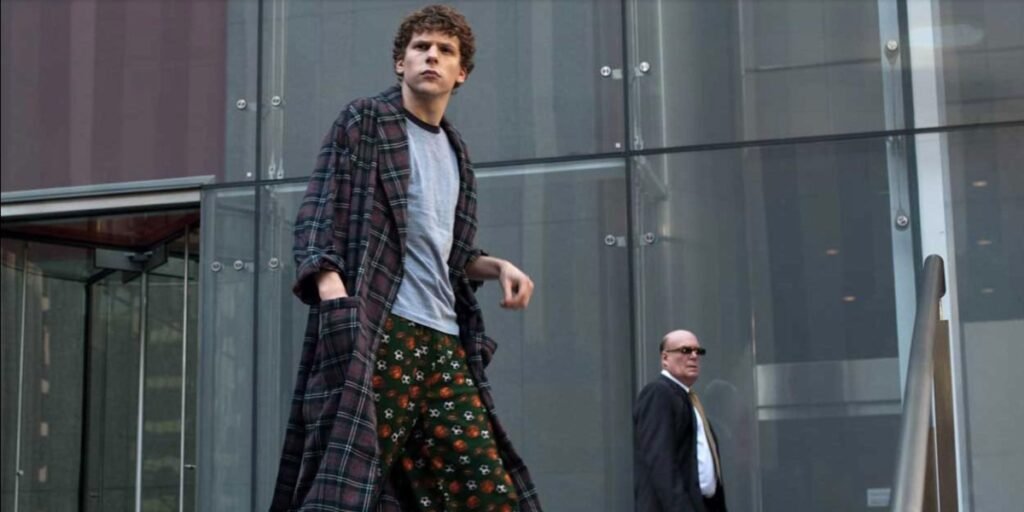
ETHAN SIMMIE: I’m really glad that you mentioned Timothée’s downtime clothes because I would hate myself if I didn’t get the chance to ask you a question about The Social Network. The costumes in that film and the energy, of course, are starkly different from anything like Killers and Dune. How do you approach a film like that? Especially with David Fincher, who’s known to be quite anal about how things are done, where the characters are essentially wearing T-shirts and hoodies and even pajamas in some scenes for most of the film. What does that look like from your perspective?
JACQUELINE WEST: Well it’s very interesting because I feel that some of my best work. I’m so glad you like it. It’s so real. It felt like a documentary. It felt like it was really happening. But it was a very funny thing when David asked me to do it we were at some screening together and he said, “I’m doing a movie I really want you to do but you probably won’t want to do it. It’s all hoodies and sweatshirts.” And I said, “Don’t say that, David, because when you say hoodie, I know it’s got to be exactly the right shade of grey.” I knew he was meticulous. I love working with David. I absolutely love working with him. He’s fabulous. I went to work on it and I did one brilliant thing on that movie aside from the brilliance of the costumes. I hired a girl, a young woman, from Harvard who had lived in the same dorm as Mark Zuckerberg. And she was one of the first people on Facebook. Then she said, “My roommate lived with one of the Winklevoss twins.” And so I hired her as my researcher.
Once Mark Zuckerberg was being interviewed after the movie came out and he said “The only thing they got right was the wardrobe.” Which is not true. But that was his remark because it was so bang on. He got defensive. The crazy thing was that it was really Facebook closing in on itself because he said, “How did she know about all those sweatshirts I wore?” When he put the little whale on the side of his logo — I put it on all these sweatshirts and he had it painted on. Even down to his shoes and his flip-flops and what tennis shoes he wore. Asics made those for me. They aren’t even in existence anymore. I had every picture of his feet under his desk, of his every sweatshirt, t-shirt. I had it all reproduced. It was all off of the initial Facebook photos that this young girl had!
ETHAN SIMMIE: I have one final question for you. You’ve worked with Jesse Eisenberg and Andrew Garfield. Some very, very big names in Hollywood. I know you mentioned you like working with Bob [De Niro]. Is there any other actor or actress that you’ve worked with in the past that you found that special connection with and really enjoyed working with on a film?
JACQUELINE WEST: Oh God, I kind of do. I’m kind of a people person and I connect with actors really easily. Phil Kaufman said I’m so good with actors that he calls me his secret weapon. I think it’s more that I like the actors that have been hired on the films. I like them as people. I’ve never gotten a lemon, somebody I just couldn’t work with, you know? But two of my favorites are definitely Brad Pitt and Cate Blanchett. I think because I’ve worked with them both a lot. I’ve gotten close to both of them, and Leo is a treasure, but maybe my newest treasure is Lily Gladstone. I adore her, but I have so many. When I think of the project, I think, I love them the most or I love them the most. Jessica Chastain, I just adore her. It’s really hard because it depends what you’re working on and how you connect on that project. And at that time that’s my favorite movie and usually my favorite people. But I think just because I’ve worked with Brad so much and Cate so much on different things that I feel this connection with both of them. And Brad was the first one to call me a method costume designer.
ETHAN SIMMIE: I want to give you one more shoutout on the goggles. Just congratulations on making such a wonderful piece of costume wear with those in Killers of the Flower Moon. Thank you so much for the time. And of course, best of luck this year at the Academy Awards. I’m looking forward to speaking again soon.
JACQUELINE WEST: On Dune: Part Two!
ETHAN SIMMIE: Yes, you bet!
JACQUELINE WEST: You’re wonderful. I love your energy and your love of film and your questions. Good job.
ETHAN SIMMIE: Thank you so much.
Killers of the Flower Moon is currently available on Apple TV+. Follow the Agents of Fandom socials for the latest entertainment news, reviews, and interviews.

